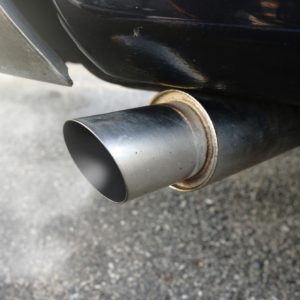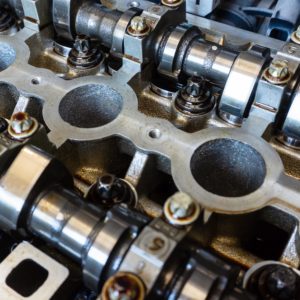Your car’s exhaust system has one or more mufflers. As you might guess, a muffler reduces or “muffles” the engine noise reverberating through the exhaust system.
Usually, mufflers develop holes due to rust and corrosion, resulting in engine noise escaping from the exhaust system and causing a bunch of racket. But there are also instances where the muffler may become clogged or obstructed, creating other noticeable problems.
Do Mufflers Get Clogged?
Any significant obstruction in the exhaust system creates excessive backpressure, which is an increase in exhaust system pressure that chokes the engine. Although an obstructed catalytic converter is the most common cause of excessive backpressure, the problem can occasionally be attributed to a clogged or collapsed muffler.
A muffler can become obstructed due to impact damage that causes its walls to collapse. Also, a muffler can become clogged if its internal baffles come apart or the catalytic converter (located upstream from the muffler) disintegrates and contaminates the exhaust system. Any of these scenarios can result in excessive exhaust backpressure.

Can a Clogged Muffler Cause a Loss of Power?
Yes. As was mentioned, a clogged muffler can result in excessive exhaust backpressure. That backpressure causes exhaust gases to be pushed back up into the engine when the exhaust valves open, effectively choking the engine.
The most common sign of excessive backpressure is a loss of power. If the exhaust obstruction is severe enough, the engine may even stall or refuse to start. The vehicle may also run rough, and the check engine light may illuminate.

How Can You Tell if Your Muffler is Clogged?
The first step in diagnosing a clogged muffler is to check exhaust backpressure. You can do this with a pressure gauge or a vacuum gauge.
To test backpressure with a pressure gauge:
- Safely raise and support the vehicle using a jack and jack stands. Set the parking brake and chock the rear wheels.
- Remove the front (upstream) oxygen sensor from the exhaust.
- Insert a suitable adapter into the oxygen sensor’s hole and attach the gauge to the adapter.
- Start the engine and let it idle.
- Note the reading on the gauge. As a general rule of thumb, backpressure should be less than 1.5 psi at idle. Consult a repair manual or repair database to determine the specification for your vehicle.
- Increase engine speed to about 2,500 rpm and note the reading on the gauge. As a general rule of thumb, backpressure should be less than 2.5 psi at 2,500 rpm. Consult a repair manual or repair database to determine the specification for your vehicle.
- Higher than normal backpressure readings indicate a restricted exhaust.
The video below demonstrates checking backpressure with a pressure gauge:
To measure backpressure with a vacuum gauge:
- Connect a vacuum gauge to a vacuum port on the intake manifold or throttle body.
- Disable the exhaust gas recirculation valve by unplugging its electrical connector or hose.
- Set the parking brake, make sure the transmission is in park, and chock the rear wheels.
- Start the engine and let it idle.
- Note the reading on the gauge. As a general rule of thumb, a healthy engine should produce 17-22 in. Hg at sea level. The reading should drop by approximately 1 in. Hg per 1,000 feet above sea level.
- At idle, a gauge reading that is lower than normal or gradually drops indicates a potential exhaust restriction.
- Next, raise the engine speed to about 2,000 rpm and note the reading on the gauge.
- A gauge reading that continues to drop below the reading you got at idle indicates a potentially restricted exhaust.
The video below demonstrates checking backpressure with a vacuum gauge:
Of course, excessive backpressure doesn’t necessarily mean you have a clogged muffler. You’ll need to do some further troubleshooting to determine the cause of the exhaust restriction.
You can sometimes pinpoint the source of the restriction by tapping on the various parts of the exhaust with a dead blow hammer. Rattling indicates something has come apart inside of the muffler, causing a restriction.
Also, you can try unbolting the muffler if it’s bolted into place (many are welded). If with the muffler removed, backpressure drops substantially and engine performance returns to normal, the muffler is likely obstructed.

What Should You Do if Your Car’s Muffler is Clogged?
Regardless of what you might read on the internet, there’s no way to effectively clean a clogged muffler. An obstructed muffler should be replaced as soon as possible, as ignoring the problem can lead to additional vehicle damage.
Any information provided on this Website is for informational purposes only and is not intended to replace consultation with a professional mechanic. The accuracy and timeliness of the information may change from the time of publication.































